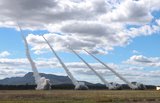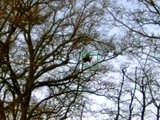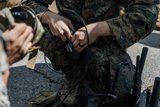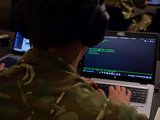Australia looks towards space with force restructure, investment and training
Australia is looking to improve its presence in space with a focus on communications and creating a dedicated segment of its defence forces committed to the domain.
The last of the six test aircraft that are the lead in for the US Navy's (USN's) P-8 maritime patrol aircraft (MPA) programme is currently at Boeing's Pugent Sound facility near Seattle going through final mission system integration and validation.
T-6 is the project's production representative aircraft and is one of three aircraft that will go on to begin the operational test programme for the aircraft next year. Initial operational capability is then targeted at 2013. 'The basic programme has held together from a schedule point of view,' Bob Feldman, Boeing's vice president and general manager, surveillance and engagement, confirmed.
The P-8 is based on the commercial 737 airframe, which is a tried and tested aircraft. The airframe is built at Boeing's Renton 737 manufacturing line before being flown to Pugent Sound for the addition of the mission systems. According to Chuck Dabundo, Boeing vice president P-8 programme, the focus has been on system integration rather than major changes to the aircraft itself.
Successfully executing the P-8 programme is key to Boeing's strategy in the surveillance aircraft market. The company is looking domestically beyond its USN customer for growth and also internationally.
Feldman argued that the P-8 outfitted with the right sensors was a viable alternative to some of the older 707 based surveillance aircraft. 'You could buy a new fleet for what it costs to sustain those 707 surveillance fleets,' Feldman stated. He added that in-service savings though fuel economy and easier maintenance would also be substantial.
The US Air Force is currently in the throes of deciding whether or not to recapitalise its aging fleet of F-8C Joint Surveillance Target Attack Radar System aircraft, based on the 707, or to look at purchasing a new fleet. Boeing is hoping to position itself as a logical supplier for a next generation system that it is currently calling P-8 Airborne Ground Surveillance (AGS). 'There is a tremendous and compelling case there,' Feldman stated.
Expanding on the point, Egan Greenstein, senior international business development manager, surveillance and engagement, said that a P-8 based fleet could offer the USAF a saving of some $500 million a year over the existing JSTARS fleet. 'It's an attempt not just to align our capability but the business strategy around P-8 derivatives,' he added.
'What makes P-8 AGS work is power and the size of the radar aperture,' Greenstein continued. The radar the company is looking at employing is a generation beyond the current technology and will exploit developments in AESA technology. Boeing believes it would be able to field the P-8 AGS by 2017. 'You're getting more capability and cost savings,' he concluded.
Looking at the international market, Boeing also sees further opportunities for the P-8. The company is already on contract to provide eight P-8s to India and the first of the aircraft is already moving through manufacturing.
Beyond that Feldman said there was the possibility in the international market for upwards of 75 aircraft. It is targeting the MPA at a number of countries including, Australia, Saudi Arabia, Norway Japan and Italy. Those numbers are based also on targeting current customers of the P-3, there are currently upward of 300 P-3s in service internationally.

Australia is looking to improve its presence in space with a focus on communications and creating a dedicated segment of its defence forces committed to the domain.

The Portuguese company’s naval communications system is in service across more than a dozen countries. It has turned to its home nation for support in developing a new vehicle based C2 system.

The Vision4ce Deep Embedded Feature Tracking (DEFT) technology software is designed to process video and images by blending traditional computer vision with artificial intelligence (AI) algorithms to present actionable information from complex environments.

Persistent Systems has been cleared by National Security Agency (NSA) to transmit sensitive data on commercial networks. The devices are added to the NSA’s Commercial Solutions for Classified (CSfC) component list which also includes other companies’ products providing the same security.

The release of the UK’s Strategic Defence Review (SDR) has been long promised as mid-year. It is possible it could be as early as 2 June although the UK Ministry of Defence (MoD) continues to play its cards close to its chest.

Intelsat outlines how its multi-orbit SATCOM architecture is enhancing connectivity and resilience for special operations forces operating in degraded and contested environments.